Lennox Brentwood SP User Manual
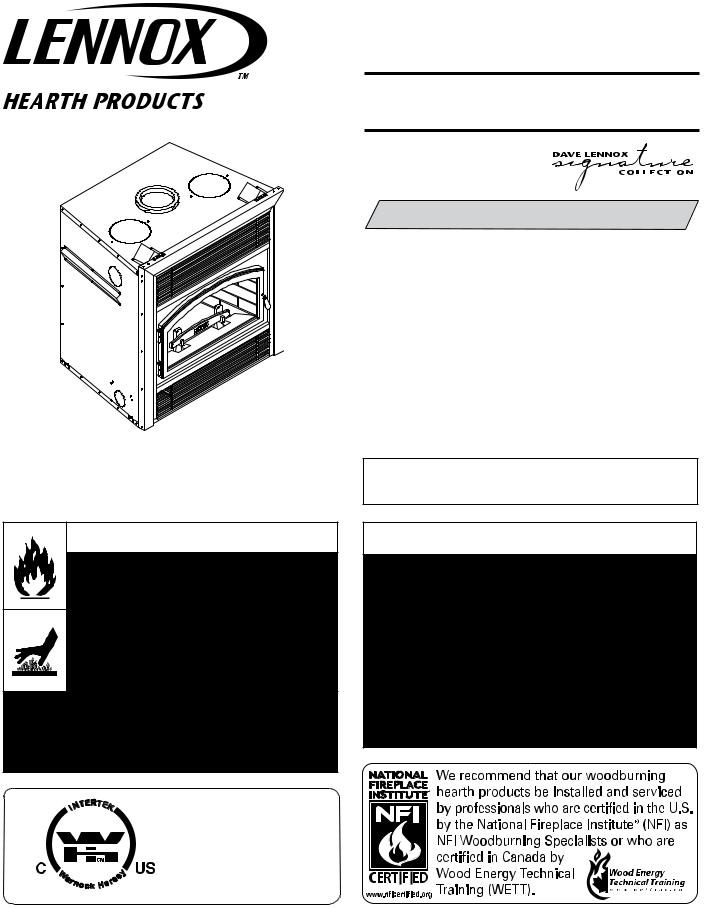
SAVE THESE INSTRUCTIONS FOR FUTURE REFERENCE
INSTALLATION AND OPERATION INSTRUCTIONS
BRENTWOOD™
EPA Wood-Burning Fireplaces |
TM |
P/N 850,039M REV. G 11/2008 |
|
|
MODEL
BRENTWOOD SP
This installation manual will enable you to obtain a safe, efficient and dependable installation of your fireplace system. Please read and understand these instructions before beginning your installation.
Do not alter or modify the fireplace or its components under any circumstances. Anymodificationoralterationofthefireplacesystem,including but not limited to the fireplace, chimney components and accessories, may void the warranty, listings and approvals of this system and could result in an unsafe and potentially dangerous installation.
Lennox Hearth Products wood-burning fireplaces are designed for use as a supplemental heater. They are not intended for continuous use as a primary heat source.
Fireplace, also for use in mobile or manufactured homes with solid fuel only.
 WARNINGS
WARNINGS
• Hot! Do not touch! The glass and surfaces of this appliance will be hot during operation and will retain heat for a while after shutting off the appliance. Severe burns may result.
•Carefully supervise children in the same room as appliance.
•If small children are present in the home, it is recommended that this appliance be fitted with a firescreen kit. See Page 21 for ordering information.
Listed to standards:
ULC-S610 & UL-127
Report No. 3011202
EPA Cert. No. 537
 WARNINGS
WARNINGS
•The fireplace cannot be operated without a door. Consult your dealer to select the correct door model.
•Important! To assure proper alignment of glass doors: Install this fireplace in a square and plumb condition, using shims as necessary at sides and/or bottom.
•Install the fireplace only as described in these instructions.
PIBRENTW REV. 11 NOV 2008
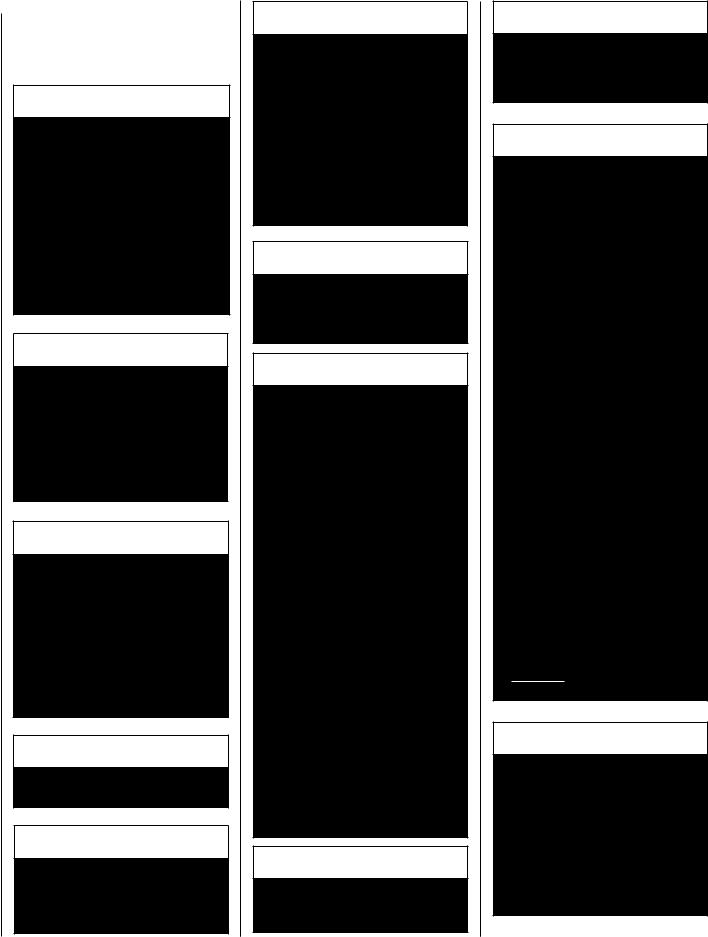
IMPORTANT! GENERAL SAFETY PRECAUTIONS. READ AND UNDERSTAND THESE SAFETY
RULES BEFORE YOUR FIRST FIRE.
 WARNING
WARNING
THE FIREPLACE MUST BE OPERATED WITH THE DOOR FULLY OPENEDORDOORFULLYCLOSED. IF THE DOORS ARE LEFT PARTLY OPENED, GAS AND FLAME MAY BE DRAWN OUT OF THE FIREPLACE OPENING, CREATING RISKS OF BOTH FIRE AND SMOKE. IF THE UNIT IS OPERATED WITH THE DOORS FULLY OPENED, THE OPTIONAL FIRE SCREEN MUST BE USED.
 WARNING
WARNING
NEVER use gasoline, gasolinetype lantern fuel, kerosene, charcoal lighter fluid, naphtha, engine oil or similar liquids to start or “freshen up” a fire in this fireplace. Keep any flammable liquids a safe distance from the fireplace at all times.
 WARNING
WARNING
THIS FIREPLACE HAS NOT BEEN TESTED WITH AN UNVENTED GAS OR A FIREPLACE INSERT. TO REDUCE RISK OF FIRE OR INJURY, DO NOT INSTALL AN UNVENTED GAS LOG SET OR FIREPLACE INSERT OR OTHER PRODUCTS NOT SPECIFIED FOR USE WITH THIS FIREPLACE.
 WARNING
WARNING
Never leave your fireplace unattended while it is burning.
 WARNING
WARNING
To avoid the risk of damaging fireplace materials and increasing the risk of fire, do not use the fireplace to cook or warm food.
 WARNING
WARNING
Use care when selecting window treatments for windows located near the fireplace. Avoid using combustible flowing window treatments such as curtains on nearby windows that are of sufficient length to be blown in front of an open flame when the window is opened. Keep any combustible furniture, materials or decorative pillows at least 48" (1219 mm) from the front fireplace opening.
 WARNING
WARNING
Never modify or alter your fireplace system in any way. To do so may create a potential fire hazard and void the Limited Warranty.
 IMPORTANT
IMPORTANT
When burning wood, use SOLID NATURAL DRY WELL-SEASONED WOOD ONLY. Hardwoods are recommended(softwoodstendtoburn very quickly).
•DO NOT burn treated wood, charcoal, coal, trash, cardboard, driftwood, woods dipped in tar, Christmas tree greens, pitch, pine tar, creosote, chemical chimney cleaners, flame colorants, polystyrene packaging, wood products with synthetic binders (i.e. plywood). Plywood, lumber and other misc. materials can produce abnormally high temperatures, sputtering and smoking fires and may contain hazardous chemicals to treat insects and fungus.
•Burning unapproved fuels can produce excessive temperatures, beyond the design capabilities of the fireplace and may produce excess sparks or may contain hazardous chemicals. Burning unapproved fuels can result in a chimney fire, a house fire, personal injury, death or loss of property.
 WARNING
WARNING
Never leave children unattended when there is a fire burning in the fireplace.
 WARNING
WARNING
Always ensure that the air inlet to the fireplace is free from debris and any other obstructions that can block the entrance of air.
 IMPORTANT
IMPORTANT
WHEN INSTALLED IN A MOBILE OR MANUFACTURED HOME:
•Mobile or manufactured home installations must be installed in accordance with the requirements of the Department of Housing and UrbanDevelopment(HUD)“Mobile HomeConstructionandSafetystandards” for US or Canada Mortgage and Housing Corporation (CMHC) for Canada.
•The fireplace must be fastened to the floor by unfolding and screwing the small tabs on both sides at the bottom of the fireplace.
•It is necessary to have access openings, for inspection purpose only, into built-in enclosures surrounding the fireplace installation. Such openings to require a household tool for access.
•The vapor barrier of the mobile home shall be as close as possible of the location where the chimney assembly penetrates the ceiling and roof structure with no interference to the required clearance to combustible material.
•Whenthemobileormanufactured homehasaflatroof,theAtticRadiation Shield must be installed from below going through the roof (See
Figures 19b and 19d).
•Warning: Do not install in a sleeping room
 WARNING
WARNING
Neither the manufacturer nor the seller warrants “smoke free” operation nor are we responsible for inadequate system draft caused by mechanical systems, general construction conditions, inadequate chimney heights, adverse wind conditions and/or unusual environmental factors or conditions beyond our control.
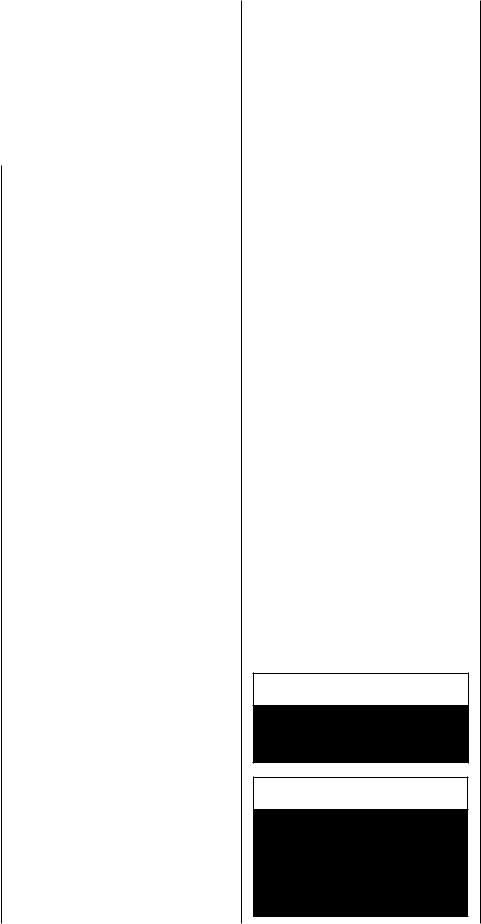
Congratulations!
In selecting this Lennox Hearth Products wood-burning appliance you have chosen one of the finest fireplaces available. The Brentwood™ fireplace is a clean burning EPA certified fireplace that is designed to provide you dependable service as well as warmth and enjoyment for many years to come.
Please carefully read and follow all of the instructions found in this manual. Please pay special attention to the safety instructions provided in this manual. This information will be useful to you now and in years to come, so keep the manual handy and refer to it as needed.
TABLE OF CONTENTS |
|
|
Safety Rules and Specifications for |
|
|
Mobile or Manufactured |
|
|
Home Installation......................... |
Page |
2 |
Introduction....................................... |
Page |
3 |
Parts Required .................................. |
Page |
3 |
Optional Equipment........................... |
Page |
3 |
Operating The Fireplace..................... |
Page |
3 |
Fuel.................................................... |
Page |
3 |
Combustion Control ......................... |
Page |
4 |
Refueling For Best Performance........ |
Page |
4 |
Smoking – Causes And |
|
|
Troubleshooting............................... |
Page |
4 |
Important Cautions............................ |
Page |
5 |
Maintaining Your |
|
|
Brentwood Fireplace........................ |
Page |
5 |
Chimney Maintenance....................... |
Page |
5 |
Dealing With A Chimney Fire............. |
Page |
5 |
Finish Door Casing Care.................... |
Page |
5 |
Disposing of Ashes............................ |
Page |
5 |
Refractory Installation....................... |
Page |
6 |
Door Installation................................ |
Page |
6 |
Door Adjustment............................... |
Page |
6 |
Glass Care - Replacement.................. |
Page |
7 |
Glass Care - Cleaning......................... |
Page |
7 |
Gasket Replacement ......................... |
Page |
7 |
Fireplace Installation ......................... |
Page |
7 |
Locating The Brentwood.................... |
Page |
7 |
Framing, Facing And Mantel.............. |
Page |
8 |
Hearth Extension Requirements ....... |
Page |
8 |
Cold Climate Installations.................. |
Pate |
8 |
Fireplace and Framing Dimensions.... |
Page |
9 |
Hot Air Ducting Installation ............... |
Page 11 |
|
Gravity Kit.......................................... |
Page 11 |
|
Outside Air Kit .................................. |
Page 13 |
|
Chimney System................................ |
Page 14 |
|
Chimney Installation Notes................ |
Page 14 |
|
Chimney Installation Instructions...... |
Page 15 |
|
Offset Chimney Installation................ |
Page 16 |
|
Angled Wall Radiation Shield............. |
Page 18 |
|
Chimney Support Installation............ |
Page 19 |
|
Chimney Chase And |
|
|
Multiple Terminations...................... |
Page 19 |
|
Chimney Adaptor............................... |
Page 19 |
|
Masonry Application Instructions...... |
Page 20 |
|
Installation Accessories..................... |
Page 21 |
|
Chimney Components Lists............... |
Page 21 |
|
Replacement Parts............................. |
Page 23 |
|
Specifications.................................... |
Page 23 |
|
Clearances......................................... |
Page 23 |
|
Product Reference Information.......... |
Page 24 |
|
THE FIREPLACE
INTRODUCTION
The Brentwood wood-burning fireplace is an energy efficient, heat circulating, closed combustion fireplace. You will receive a lifetime of comfort and enjoyment from your fireplace provided it is installed, maintained and operated properly.
•Please read these instructions and retain this manual for future reference.
•Before beginning the fireplace installation, consult the local authorities to obtain your building permit and check your local building codes. Install the fireplace only as described in these instructions and using only Lennox Hearth Products components.
•The Brentwood fireplace is not intended for use with a gas log set. Do not use a fireplace insert or any other product with this fireplace unlessitisspecifiedbyLennoxforusewiththis appliance. Failure to follow these instructions will void the certification and the warranty of the fireplace and may result in an unsafe installation.
•Lennox Hearth Products wood fireplaces are designed for use as a supplemental heater. They are not intended for continuous use as a primary heat source.
Parts Required
Fireplace Model Brentwood SP
•6” diameter chimney - model ASHT, S-2100+, HT6000+, HT6103+ or AC manufactured by Security Chimneys International only, including:
-Chimney lengths
-Elbows (where necessary)
-Associated components as per these installation instructions
•..Decorative Cast Iron Door - Required
...(Order Separately)
-Available in black, gold or brushed nickel (see Page 21)
•..Outside air kit (Included w/Fireplace)
OPTIONAL EQUIPMENT
•Additional Equipment (optional)
-AC Chimney Adaptor
(required if using AC Chimney)
-AC chimney outside air kit
-Gravity venting system
-Panel for clean face option
(only with gravity venting system)
-Rigid firescreen
-Fireplace Blower Kit
-Blower Speed Control
OPERATING THE Brentwood fireplace
Fuel
USE SOLID NATURAL WOOD FUEL ONLY. The Brentwood fireplace is designed to work best when fueled with dry seasoned natural wood only. Hardwoods are preferred to softwoods since the energy content of wood is relative to its density. Hardwoods will result in a longer burning fire and less frequent refueling. A moisture content of 15% to 20% (seasoned) is recommended. Wood that has been cut and split and let to dry under a cover for a period of one year will usually meet that criteria. Excessively wet wood will be difficult to burn and will result in lower efficiency, increased creosoting and deposits on the glass and in the chimney. Excessively dry wood will burn well but will also have higher emissions and shorter burning time.
Do not burn scrap or garbage, treated wood or wood such as driftwood from the ocean which has been exposed to salt or other chemicals. Salt or chemicals can corrode the firebox and chimney. Do not burn large amounts of paper, cardboard, Christmas tree branches or building construction materials. Intense firing with these materials may overheat the fireplace, causing damage to the unit, a fire or even possibly igniting a chimney fire if the chimney is creosoted.
First Fires
Before using the fireplace make sure to remove the plastic wrapping and EPA label on the door. Remove any glue residue left by the label using mild soap.
The first five or six fires should be small fires of short duration (about 30 to 60 minutes). This will help cure the refractory bricks. The first fires may produce slight smoking and some odor due to curing of the paint and steel and the burning off of dust accumulated on the fireplace will burn off at this time. It may set off a smoke alarm located in the same room. For this reason the room should be well ventilated for the first few fires.
 WARNING
WARNING
Be careful adding wood fuel to the fireorhandlingfireplacetoolssuch as shovels, tongs or pokers.
 WARNING
WARNING
The bottom refractory can be cracked by excessive abuse such as tossing heavy logs onto the grate or gouging with fireplace tools. Exercise caution when adding wood to your fireplace.
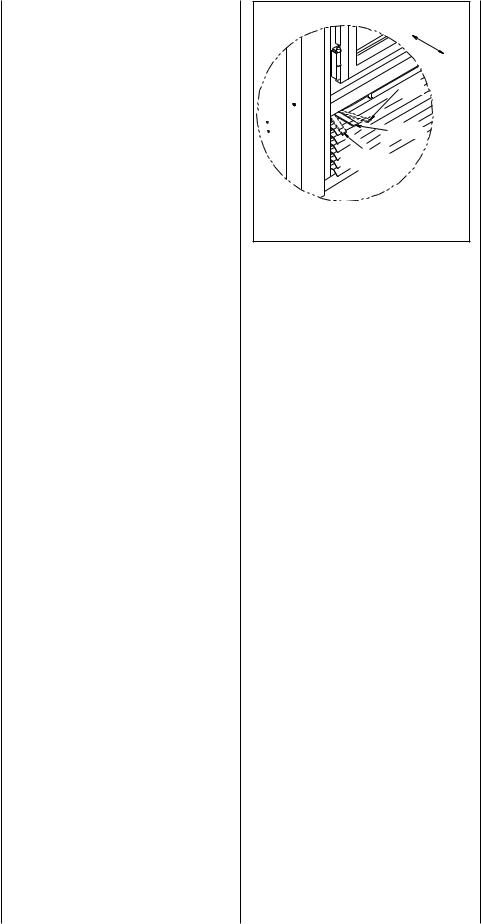
Building a Fire
(starting and maintaining a fire)
To start a fire, place several crumpled up balls of newspaper in the firebox. Place small dry pieces of kindling on top of the paper, criss-crossing the kindling so that there are air spaces in between. Keep the fuel far back enough so that air can get underneath. Open the air controls fully and light the newspaper. Once the newspaper and the kindling is well ignited, close the door. Once the kindling fire is well established, cord wood can be added (see Primary Air Combustion Control section for proper operation of the air controls).
The unit will burn best with 2-3 pieces of cord wood spaced 1 to 2 inches apart and allowing air to get under the fuel. Criss-crossing or arranging the fuel so that air can get underneath, will help the fire to get started easily. The unit should be operated with the air control fully open long enough to get the cord wood well ignited.
COMBUSTION CONTROLS
Primary Air and Air Boost Controls
There is no flue damper in the Brentwood™ fireplace. As is common with air tight stoves, the combustion air control sets the flow of air entering the firebox. This allows for a more precise control of the fire. The combustion air control is located below the door on the left side. The main source of air (primary air) entering the firebox can be diminished by moving the air combustion control from left to right. The primary air is fully opened when the air control is completely moved to the left. The air control device can also be used to add an extra boost of air especially during fire start up and reloading of the unit. Pulling the air combustion control will induce an air boost at the base of the fire allowing an easier fire start up. When the fire is well established, the control can be pushed in to shut down the air boost allowing for a longer burn time. The combustion air control should be in the closed position (primary air and air boost) when the fireplace is not in use. This will minimize air leakage up the chimney. The combustion air control should be opened before opening the door to minimize the possibility of back draft coming into the room.
Accelerated Combustion
The maximum heat output for the Brentwood™ fireplace is achieved by burning with the door closed and the combustion air opened and pulled out. By this method, the Brentwood fireplace can produce up to 55,000 BTU of heat per hour. However, it will be necessary to reload with wood every one or two hours. This is the least efficient method of burning the Brentwood fireplace.
Push to Close |
|
Air Boost |
|
|
Pull to |
|
Open |
Slow |
Air Boost |
Medium |
|
Accelerated |
|
Figure 1 |
|
Use caution when firing with the combustion air control wide open. Only burn cord wood in this manner. Small dry pieces of softwood and construction scraps will burn very intensely using this method and may damage the firebox.
Medium Combustion
This is the recommended mode of operating the Brentwood fireplace and should be the one normally used since it will deposit the least amount of creosote on the glass and in the chimney. The combustion air control must be 3/4 closed and pushed in to close the air boost. The precise setting will depend on many factors, including chimney length and the moisture content of the wood.
For instance, a long chimney will necessitate closing the damper more. To obtain the proper combustion, close the damper completely, then open it about 1/4” to 1/2”. Three medium size pieces of wood should be burning on a bed of hot coals. The heat output will be approximately 30,000 BTU per hour and the loading time will be about every 3-4 hours. Softwoods may be burned using this method but the time will be substantially reduced.
Slow Combustion
When the air combustion control is completely closed, the fireplace is in a slow combustion phase. If the hearth is hot enough, slow combustion will not extinguish the fire, but there will be a noticeable change in the flame pattern. The flames will be slow and may appear dirty if the wood is too wet (moisture content of 20% and more). Do not allow the wood to burn without flame, since this will produce excessive creosote in the unit.
NOTE: DIAGRAMS & ILLUSTRATIONS ARE NOT TO SCALE.
Creosote may accumulate on the glass door. This method of burning should be used only after operating the Brentwood fireplace with the air control opened to produce a hot fire for about an hour or at medium pace for at least three (3) hours. Slow combustion can be used at night in order to reduce the heat output and to prolong the burn. The loading time will be between 6-8 hours.
REFUELING FOR BEST PERFORMANCE
The Brentwood fireplace will operate best if attention is given to operating the unit with the damper fully opened after refueling in order to bring the firebox and the chimney system up to their optimum operating temperature. Combustion efficiency is relative to firebox temperature. A temperature of 500º C (932º F) and up, with a visible flame, in the upper part of the firebox indicates a maximum efficiency. To obtain this temperature, the fireplace must be operated with the primary air and air boost controls fully opened during 10 to 20 minutes after reloading, depending on the heat and on the moisture content of the wood.
Once you have reached the desired temperature, the air boost can be closed and the primary air set to a medium setting. You know you have reached the desired temperature when, closing the primary air control, you can see a flame at the top of the firebox. The benefit of this technique will be cleaner glass, less creosoting, greater efficiency and the most pleasing fire for your enjoyment.
SMOKING –
CAUSES AND TROUBLESHOOTING
To reduce the likelihood of smoking when opening the door, set the combustion air controls to the left before opening the door. Your fireplace has been designed and tested to provide smoke free operation. Occasionally, there may be a small amount of smoking upon lighting the fire, until the chimney heats up but this should not continue. If the fireplace continues to smoke it is probably for one of the following reasons:
A.Negative pressure in the house
As the fire burns, air goes up the chimney. This air must be replaced through leakage into the house or through the outside air duct. When operating the Brentwood fireplace, open a nearby window temporarily to check if there is adequate replacement air supply.

B.Blowers operating (e.g.: range hood)
These blowers draw air out of the house and may actually cause a negative pressure in the house. Turn off all blowers and open a nearby window to determine if this is the cause of the problem.
C.Wet wood
Wet or tarred wood will smoulder and smoke instead of burn properly.
D.Dirty or blocked chimney
Check to make sure the chimney is clear and clean.
E.Chimney not long enough
The minimum chimney height is twelve (12) feet (3.7 m) not including the fireplace height. The chimney must extend at least three (3) feet (915 mm) above its point of contact with the roof and at least two (2) feet (610 mm) higher than any roof or wall within ten (10) feet (3 m) of it. When installed with offsets, the minimum chimney height is fifteen (15) feet. Additional height will increase draft and will decrease the tendency to smoke.
F.Poor chimney draft
With no fire, there should be sufficient draft to exhaust cigarette smoke introduced under the baffle. Chimneys installed against an outside wallwithoutprotectionmaygeneratebackdraft problems which will cause start-up problems. To prevent this, open a nearby window, roll up a piece of paper and light it. Then, hold it in the upper part of the firebox to warm up the chimney. Wait until the draft is sufficient, then start the fire.
IMPORTANT CAUTIONS
A.Do not block the hot air vents to the fireplace as this will cause the fireplace to overheat.
B.Never use gasoline, gasoline-type lantern fuel, kerosene, charcoal lighter fluid, or similar liquids to start or ‘freshen up’ a fire in this fireplace. Keep all such liquids well away from the fireplace while it is in use.
C.Do not burn coal. The sulphur in coal will corrode the firebox.
D.Do not burn driftwood which has been in the ocean or salt water. The salt will corrode the firebox and chimney.
E.Do not burn wood in the area in front of the grate.
F.Do not abuse the unit by burning paper, or cardboard or construction material such as pressed wood, plywood or lumber. Wood protectors, metallic paper, coal, plastic, waste, sulphur and/or oil will damage the fireplace.
G.Do not allow the wood to smoulder or burn without flame, since this will produce excessive creosote in the unit.
MAINTAINING YOUR FIREPLACE
Creosote - Formation and Need for Removal
When wood is burned slowly, it produces tar and other organic vapors, which combine with expelled moisture to form creosote. The creosote vapors condense in the relatively cool chimney flue of a slow-burning fire.
NOTE: DIAGRAMS & ILLUSTRATIONS ARE NOT TO SCALE.
As a result, creosote residue accumulates on the flue lining. When ignited this creosote makes and extremely hot fire.
The chimney shall be inspected at least twice a year during the heating season to determine when a creosote buildup has occurred.
When creosote has accumulated it shall be removed to reduce the risk of a chimney fire.
When the creosote accumulation is large, a creosote fire in the chimney can damage the chimney and overheat the surrounding wood framing. Creosote formation in a chimney can be minimized by making sure there is always visible flame burning, avoid smouldering fires and by proper refuelling techniques.
Chimney Maintenance
Regular chimney inspection and maintenance combined with proper operation will prevent chimney fires. Keep your chimney clean. Do not allow more than 1/16” (1.6 mm) creosote build up in your chimney. The amount of creosote will depend on variables such as frequency of use and type of fire. We recommend that you:
A.Initially inspect the chimney system weekly. From this, you will learn how often it will be necessary to clean your chimney.
B.Have your chimney cleaned by a qualified chimney sweep. If you wish to clean it yourself, we recommend using a stiff plastic or non-metallic brush. If a metal brush is used, its size should be slightly smaller than the flue to avoid damaging the chimney. Do not use a brush that will scratch the stainless steel interior of the chimney.
C.Do not expect chemical cleaners to keep your chimney clean. The rain cap can be removed for inspection and/or cleaning of the chimney.
Top Baffle Removal Prior to Cleaning The Chimney
Before starting to clean your chimney, we recommend that you remove the top baffle to avoid creosote dust collection at the top of the baffle. Follow these steps to set the top baffle out of the way:
1.Remove the side refractory holder. They are located at the top of the refractory.
2.Lift the front baffle.
3.Slide the back baffle under the front baffle. You now have access to the chimney.
Figure 2a - Top Baffle Removal |
Figure 2b |
- Top Baffle Removal |
Dealing With a Chimney Fire
Regular chimney maintenance and inspection can prevent chimney fires. If you have a chimney fire, follow these steps:
1.Close the fireplace door and the combustion air controls.
2.Alert your family of the possible danger.
3.If you require assistance, alert your fire department.
4.If possible, use a dry chemical fire extinguisher, baking soda or sand to control the fire. Do not use water as it may cause a dangerous steam explosion.
5.Check outside to ensure that sparks and hot embers coming out of the chimney are not igniting the roof.
6.Do not use the fireplace again until your chimney and fireplace have been inspected by a qualified chimney sweep or a Fire Department Inspector.
Finish Door Casing Care
Use a glass cleaner and a soft cloth to polish the casing. Do not use abrasives such as steel wool, steel pads or an abrasive polish for they may scratch the casing’s finish.
DISPOSING OF ASHES
Remove ashes only when the fire is out and the ashes are cold (24 to 48 hours after the fire is out).
 WARNING
WARNING
Disposal of Ashes: Ashes should beplacedinametalcontainerwith a tight fitting lid. The closed container of ashes should be placed on a non-combustible floor or on the ground well away from all combustible materials, pending final disposal. If the ashes are disposed of by burial in soil or otherwise locally dispersed, they should be retained in the closed container until all cinders have thoroughly cooled.
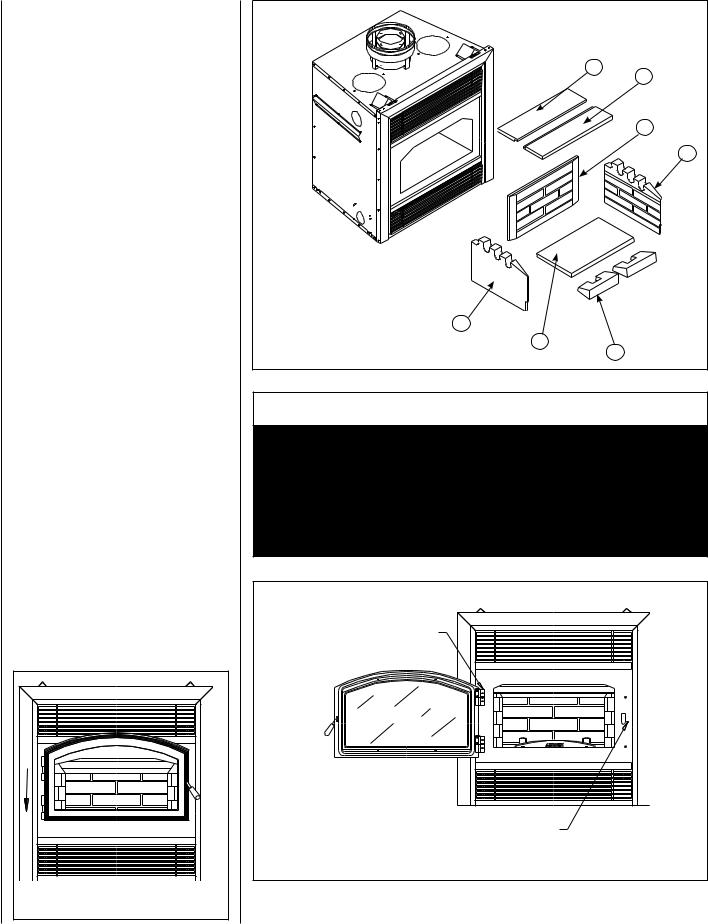
REFRACTORY REPLACEMENT
The intense heat of the fire will normally cause hairline cracks in the refractory. These cracks can be minimized by proper curing as described in “First Fires”. They will not normally diminish the effectiveness of the refractory. If large cracks develop, then the refractory should be replaced. To replace the refractory bricks, follow these steps:
1.Remove the front refractories
2.Remove the bottom refractory
3.Remove the left side refractory
4.Remove the right side refractory
5.Remove the back refractory
6.Remove the front ceramic baffle
7.Remove the rear ceramic baffle
To install the new refractories, follow the above steps in reverse.
DOOR INSTALLATION
The door must be installed only when the installation of the Brentwood™ fireplace is completed. All you have to do is fit the male part of the hinge, already on the door, to the female part, which is on the fireplace.
To remove the door, simply pull the door up from the hinges.
The door adjustment has been set at the factory. If the fit is still not perfect, you can adjust the door using the hinge screws.
DOOR ADJUSTMENT
The door may need to be adjusted to be completely airtight. The gaskets’ air-tightness can be adjusted using the adjustment screw located on the right side of the fireplace facade (An Allen key #1/8 – not supplied - will be necessary for this adjustment).
Checking Door Seal - A one-inch strip of paper may be used to perform a test of the integrity of the door seal. Close the door on the paper in at least eight points. It is normal to feel only a slight amount of friction. The door gasket does not need to be “tight” in all areas, since a small amount of leakage is not hazardous or detrimental to the performance of your fireplace.
Figure 4 - Door Installation |
|
|
7 |
|
|
|
6 |
|
|
|
5 |
|
|
|
4 |
|
1. |
Front Refractories |
|
|
2. |
Bottom Refractory |
|
|
3. |
Left Side Refractory |
|
|
4. |
Right Side Refractory |
|
|
5. |
Back Refractory |
|
|
6. |
Front Ceramic Baffle |
|
|
7. |
Rear Ceramic Baffle |
3 |
|
Figure 3 |
2 |
||
1 |
|||
|
|
||
 WARNINGS
WARNINGS
•UseonlyaLennoxHearthProductsglassdoors,specificallydesigned for the Brentwood fireplace.
•The fireplace cannot be operated without a door. Consult your dealer to select the correct door model.
•Important! To assure proper alignment of glass doors: Install this fireplace in a square and plumb condition, using shims as necessary at sides and/or bottom.
Hinge Screws
Gasket Adjustment Screw
Figure 5
NOTE: DIAGRAMS & ILLUSTRATIONS ARE NOT TO SCALE.
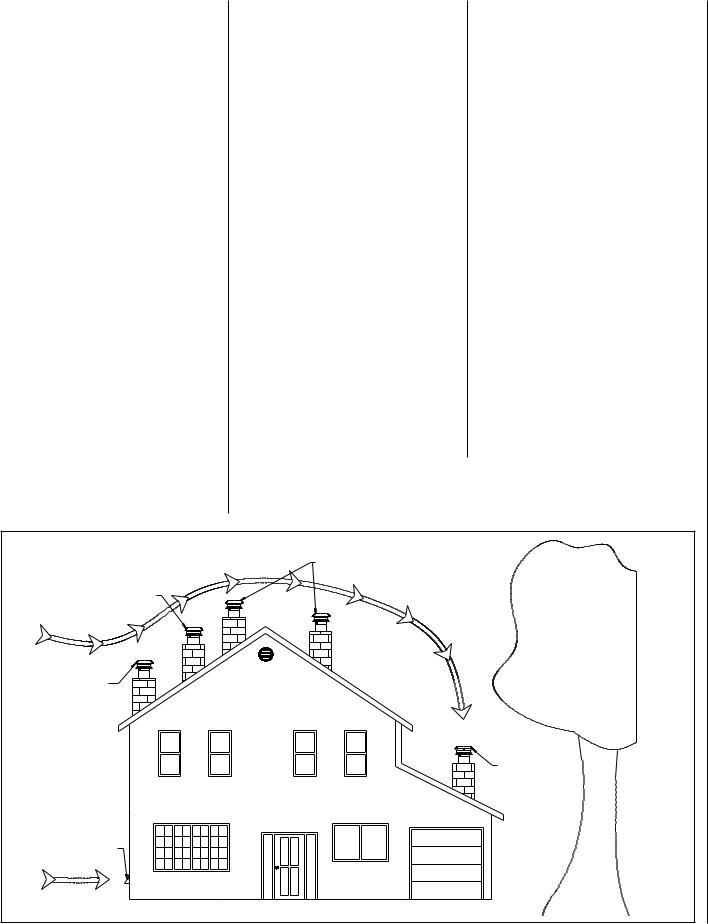
Glass Care
Glass Replacement
The glass used for the Brentwood™ fireplace is a high temperature ceramic glass (1,400° F). If the glass breaks, it must be replaced with an identical ceramic glass. Tempered glass or ordinary glass will not withstand the high temperatures of the Brentwood fireplace. Replacement glass should be purchased from a Lennox Hearth Products dealer (see “Replacement Parts”, Page 23). DO NOT OPERATE THE
UNIT WITH CRACKED OR BROKEN GLASS.
Glass Cleaning
The Brentwood fireplace is designed to keep the glass clean under normal operating conditions. If the Brentwood fireplace is operated continuously with the combustion air controls closed, the glass will tend to get dirty unless the fuel, firebox and glass are maintained at hot temperatures (see “Refueling For Best Performance”). To clean the glass, there are a number of specially designed cleaners. Your authorized Lennox Hearth Products dealer can recommend a suitable cleaner which is available in your area. Regular household glass cleaners will not clean creosote. Do not use abrasives such as steel pads, steel wool or oven cleaner as they will scratch the glass.
DO NOT USE CHEMICAL GLASS CLEANERS ON PAINTED SURFACES AS IT MAY CAUSE THE PAINT TO PEEL.
CAUTION : DO NOT ALLOW WINDOW CLEANER TO GET IN CONTACT WITH DOOR GASKET OR PAINT ON FACADE OR DOOR. ONCE CLOSED, CONTACT OF GLASS CLEANER WITH THE FIREPLACE FACADE CAN PROVOKE PAINT PEELING OFF.
Gasket Replacement
Remove the door from the unit (see Page 6) and lay it on a clean unabrasive surface. To replace the gasket, first remove all of the old gasket and gasket cement. Make sure that the surface is totally clean before applying new cement (a high temperature silicone caulking rated at 500° F [260° C] is suitable) or adhesion problems may result. Apply gasket cement to the gasket channel and install the new gasket. This replacement part is available from your Lennox Hearth Products dealer in the following dimensions:
Gasket |
Length |
Dimensions |
Part No. |
|
|
|
|
|
|
Around |
69 |
5/16” dia. |
SR1823H |
|
Glass |
(1753) |
(8) |
||
|
||||
|
|
|
|
|
On Door |
73 |
5/8 dia. |
SR1823G |
|
Frame |
(1854) |
(15.9) |
||
|
||||
|
|
|
|
|
Table 1 |
|
Inches (millimeters) |
||
|
|
|
|
|
FIREPLACE INSTALLATION
Locating The Brentwood Fireplace
A.The best location to install your fireplace is determined by considering the location of windows, doors, and the traffic flow in the room where the fireplace is located, allowing space in front of the unit for the hearth extension and the mantel, and taking into consideration the location of the hot air ducts (optional), outside air kit and chimney.
If possible, you should choose a location where the chimney will pass through the house without cutting floor or roof joists (see fireplace dimensions Page 9).
B.Usually, no additional floor support is needed for the fireplace. The adequacy of the floor can be checked by first estimating the weight of the fireplace system. Weights are given in the appendix. Next, measure the area occupied by the fireplace which is normally 36” x 24-1/2” (914mm x 622mm). Note the floor construction and consult your local building code to determine if additional support is needed.
C.The Brentwood fireplace may be installed directly on the floor or on a raised base (for proper guidelines, refer to “Hearth Extension Requirements”) and a minimum of 6’8” (2 m) measured from the base of the appliance to the ceiling is required.
When selecting the location, the chimney outlet position and the direction of the wind are important factor affecting the chimney performance. To allow a maximum draft and to reduce wind turbulence, the chimney must:
•Penetrate the highest part of the roof.
•Be installed as far as possible of roof offsets, trees or any other obstructions that may cause wind turbulence and back drafts in the chimney.
•The least amount of offsets (elbows) possible.
|
Location Recommended |
Marginal Location |
|
Wind Direction |
|
Location |
|
Not |
|
Recommended |
|
|
Location |
|
Not |
|
Recommended |
Outside Air Intake |
|
Facing the Wind |
|
Figure 6 |
NOTE: DIAGRAMS & ILLUSTRATIONS ARE NOT TO SCALE. |
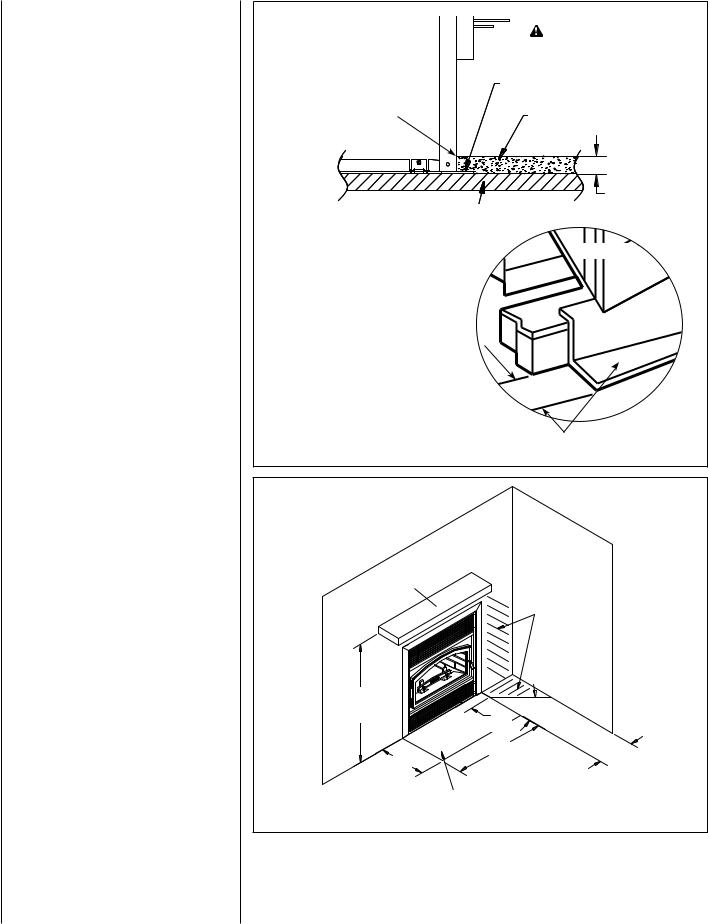
Framing, Facing And Mantel
The construction of the framing, facing, and mantel must be in accordance with the standards and the following illustrations (Figures
7a, 7b and 8):
A.Frame the fireplace using 2” x 3” or heavier lumber.
B.WARNING: Combustible materials cannot be used in the space directly above the fireplace, except for the studs above the facade that support the facing and mantel. This area must remain empty for a height of 6’8” (2,032 mm) measured from the base of the appliance.
C.Frame the fireplace with vertical studs at the sides of the fireplace running from floor to ceiling (see Figure 8). If combustible facing is to be used, position the studs back, from the front edge of the fireplace (a space that is the thickness of the facing material, so that the facing can be installed flush with the fireplace facing). Frame headers between the vertical studs only as follows:
-Place 2” x 3” or 2” x 4” headers, only along the upper part of the front, side and back faces (some codes may require a 2” x 6 ” on an outside bearing wall). Do not put wood or any combustible material within the area above the fireplace except on the front facing.
-Placeheadersonlyasrequiredtosupport the facing and mantel.
D.WARNING: The fireplace must not be in contact with any insulation or loose filling material. Cover the insulation with Drywall panels around the fireplace.
Hearth Extension Requirements
The Brentwood fireplace may be installed directly on a combustible floor. The supplied safety metal strip must be positioned as follows: One half under the front of the fireplace and the other half must extend on the floor over which the hearth extension will be built (see Figure 7a).
*The safety metal strip must cover the entire width of the fireplace
The combustible floor in front of the fireplace must be covered with a non-combustible material (tile, marble, stone, etc). See Figures 7a and 7b.
Cold climate INSTALLATIONS
Climates where temperatures will fall below 32° F (0° C).
The heating performance of the appliance will vary depending upon the level of insulation, house design, how the appliance is operated, etc.
If this fireplace is being installed in a cold climate, it is especially important to seal all cracks around the fireplace and wherever cold air could enter the room with noncombustible material.
Fireplace
The crack between the fireplace and the hearth extension must be sealed with a non-combustible material such as sand-cement grout.
Floor
Elevated Fireplaces
uElevated fireplace installations require a special “Z” Metal Safety Strips (field provided), in place of the safety metal strip shown above. The safety strip should extend the full width of the fireplace. When more than onesafetystripisusedtheymust overlap by a minimum of 1”.
Figure 7A - Hearth Extension Requirements
WARNING: THE HEARTH EXTENSION IS TO BE INSTALLED ONLY AS ILLUSTRATED.
Safety Metal Strip
Hearth Extension
Non-Combustible
Finish Material
1/2”
13mm
Fireplace
Platform
2”
u
Mantel |
Area where wood |
|
Mantel can be |
|
installed |
45” |
|
|
|
|
(1143mm) |
|
4” |
45 Deg. |
|
Min. |
|
|
||
|
|
|
||
|
Hearth |
(102mm) |
|
|
|
Extension |
36” |
|
17” Min. |
|
|
|
||
18” |
|
(914mm) |
(432mm) |
|
(457mm) |
|
|
|
|
Non-Combustible Material
Figure 7b - Hearth Extension Requirements
Also, the outside air inlet duct should be wrapped with noncombustible insulation to minimize the formation of condensation. Do not place insulation materials directly against the chimney sections. We recommend that you use the insulated wall radiation shield since it will maintain the home’s thermal barrier. AC chimney is NOT recommended in very cold climates (in areas with temperatures below 0° F (-18° C).
NOTE: DIAGRAMS & ILLUSTRATIONS ARE NOT TO SCALE.
